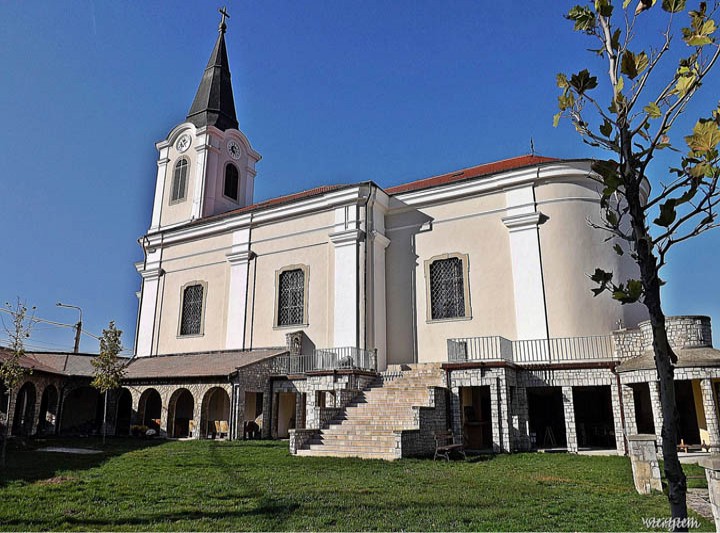
Shrine of Mary, Bodajk
As early as the 9th century the holy well in Bodajk was surrounded by religious reverence and on St. Stephen’s initiative a chapel was built to honour the Virgin Mary at the foot of Calvary Hill. King Stephen himself and his son, Prince Emeric made several pilgrimages here.
According to the chronicles they also visited the lake in the village so even this place has historical importance. Bodajk was also visited by Gerard Sagredo (Gellért) and even by King St. Ladislaus (László) who, according to the legend, by making the sign of cross put the pagan Tartar troops to flight who were marching towards the Lower-Danube about to set siege to Székesfehérvár. Later the Order of Capuchin Friars Minor was ordered to rebuild the shrine. One of the fathers named Willibald started the work and established the foundations of one of the most visited shrines in the Trans-Danubian region. On the original foundations he began to build the chapel of the Helping Virgin. Later a baroque church was built to house the pilgrims. The Archbishop, Lipót Kolonics, Primate of Hungary himself led the building.
The frescos we can see today are the same age as the building and according to experts the great baroque artist Maulbertsch also had a part in the making of it. In the Catholic church, above the tabernacle we can see the copy of a picture from Passau of the Helping Virgin Mary which was the gift of Colloredó, a countess from Vienna.
The religious revival of modern times demanded the shrine be extended. This could only be done by starting the development of a pilgrims’ court holding fifteen-thousand pilgrims in 1942 with Italian style lines of arches and an outdoor altar. A life-size statue of Mary can be found in the court with the miraculous well beneath it. This has subsequently dried up due to mining but will soon be in working order again.
| Address: | 8053 Bodajk, Szent István square 1. |
| Email: | bodajkikegyhely@gmail.com |
| Phone: | +36 22 410 039 |












3000px.png)









